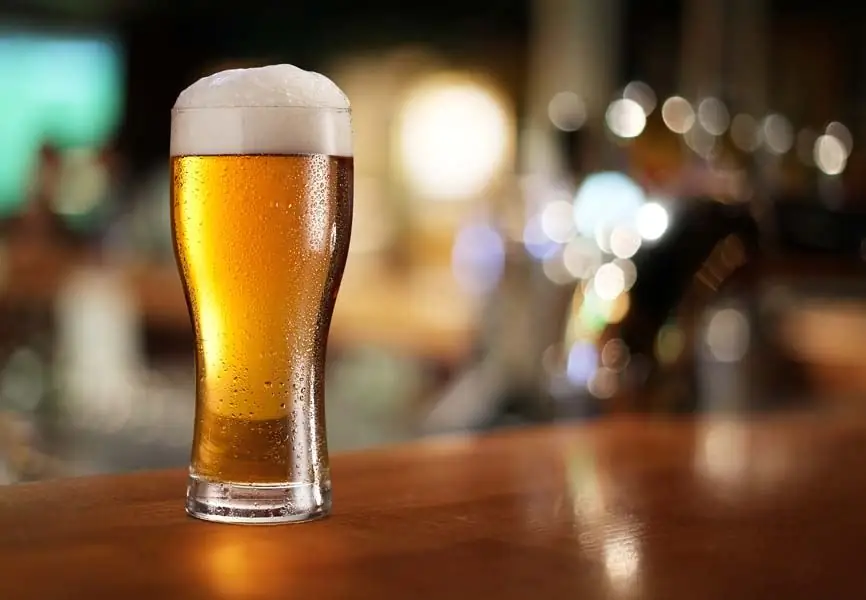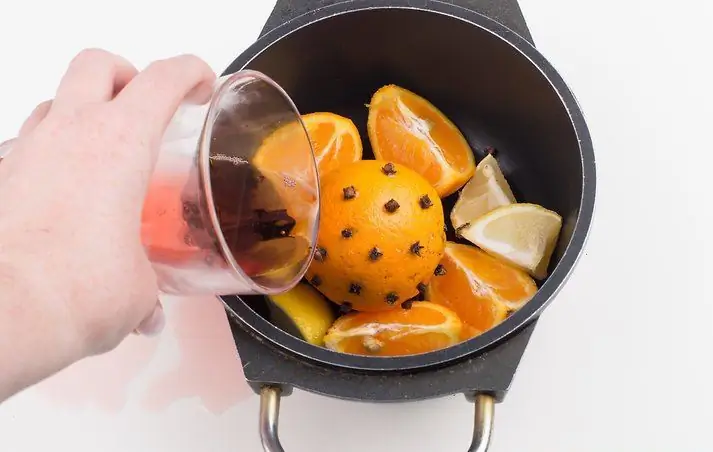2025 Author: Isabella Gilson | [email protected]. Last modified: 2025-01-23 12:50:43
There is in Northern Italy, in the Veneto region, the wonderful Lake Garda. Its shores are a continuous chain of resorts. And one of them is the town of Bardolino. It is located on the southeastern coast of Garda. The city of Bardolino can offer travelers a lot of interesting sights: the Romanesque churches of Saint Vito and Saint Zeno, a monastery of the twelfth century, the majestic feudal castle of the Scaligers and many lovely villas of the century before last.
But gourmets rush to the city not for this. After all, Bardolino is the center of the homonymous wine subregion with the status of DOC and DOCG. In addition, the city has the Enoteca Museo del Vino. In this museum, you can not only get acquainted with the technology of wine production, but also taste it, as well as buy yourself a couple of bottles. We invite you to take a virtual tour of the workshops and cellars of the exposition in order to understand all the intricacies of Bardolino wine.

Features of the region
Lake Garda lies at the foot of the Alps. They protect the region from frosty northern winds in winter and bring coolness in summer. By the way, the province of Veneto is famous for its wines. To the east of Bardolino lies the equally well-known sub-region of Valpolicella, and to the northeast, Val d'Adige. But the hero of our story has one indisputable advantage over his neighbors, namely the coastal location. The surface of Lake Garda serves as a reflector of the sun's rays. Thus, the vineyards receive an additional portion of light and heat, which ensures the full phenolic ripeness of the berries.

In addition, the reservoir smooths out the differences in day and night temperatures. The diversity of soils makes it possible to divide the subregion into appellations. Bardolino Classico wine is produced in the area of the town. On the hills surrounding the resort, the soils are more scarce. They give smaller yields, respectively, they make the best wine. Such powerful and strong drinks are labeled "Bardolino Superiore", and they have the status of DOCG.
Blend
The local museum will tell you that Gaius Julius Caesar, Emperor Marcus Porcius Cato the Elder, Patrician Flavius Aurelius Magnus Cassodorus and the ancient poet Gaius Catullus liked to drink wine from this region. And if these connoisseurs liked the drinks from Bardolino, produced in an ancient way, then what would they say if they tried them now? It's not just technology that has evolved. People have learned to make dry wines. Bardolino, like his eastern neighbor Valpolicella, -bath drink. For wine take three varieties: Rondinella, Corvina and Molinara. This trio is valpolicella.
But Bardolino has its own characteristics. The first is a larger percentage of Rondinella at the expense of Corvina. The second grade is responsible for the dense structure of the drink, its density and rich ruby color. It also gives the wine a cherry flavor. Rondinella brings fresh grassy notes and light astringency to it. Molinara gives wine the aroma of spices. The second distinctive nuance, in comparison with Valpolicella, is the addition of other varieties in small quantities. Most often it is Sangiovese, Barbera and Marzemino. Less often, French varieties serve as additives - Cabernet Sauvignon and Merlot.

Technology
In the Classico appellation (the coastal lowland part of the subregion), dry red wine Bardolino is made. It is better not to store such drinks for a long time, but to use them within a year or two after bottling. Elevated above the surface of the lake, the Superiore appellation is famous for its wine, the strength of which is 12 degrees (whereas in drinks from Classico only 10.5). The must is aged in oak barrels for a minimum of 12 months before being bottled. But this wine should not be stored for more than eight years.
The region produces not only red, but also pink drinks. They are called chiaretto and are marked DOC. When Beaujolais Nouveau became fashionable, local houses put on the market their analogue of young wine - Bardolino Novello.
And finally, sparkling drinks - spumante and frisante. These Italian champagnes are made fromChiaretto and Novello.

Famous Bardolino wine brands
Now let's start tasting drinks. First, let's try the young wine Novello DOC - the Italian analogue of the French Beaujolais Nouveau. Such drinks have been produced in the Bardolino sub-region since 1987. As in France, Novello wine is bottled until the end of the harvest period. Drinks go on sale on November 6 next year. Interestingly, when the wine is bottled, it is intensely pink. But over time, its color changes, becoming dark cherry and garnet.
The Novello wines have an elegant taste with hints of wild cherries, raspberries and strawberries, as well as low tannins. Such drinks cannot be stored for a long time, they must be consumed within a year. Novello goes well with grilled fish, boiled white meat, risotto. Young wine should be served chilled to +14…+15 °C. The sparkling variation of frisante should be brought to +10…+12 °C. Novellos are released to the market every autumn by many manufacturers from the Bardolino sub-region. All these drinks are very worthy.

Semi-dry red wines
As mentioned above, the subregion is divided into appellations according to climatic and soil characteristics. Coastal vineyards are located on fertile soils, they give abundant harvests. This can reduce the gastronomic quality of the berries. Therefore, winemakers artificially reduce the yield of vines. In order for drinks to have DOC status, the best are selected for them.berries. However, grapes in warmer climates have enough sugars.
The mentioned trio of varieties is used for the drink, which ensures the harmonization of taste and tannins. Of the semi-dry red wines of Bardolino, it is worth mentioning the very worthy Pascua brands of the Colori d'Italia brand and Domini Veneti, Sartori Villa Molina. All of them are marked with DOC status. Their strength is slightly higher than dry drinks (12-12.5 versus 10.5-11 degrees). These wines are served unchilled. They pair perfectly with Italian cuisine.
Chiaretto
The Italian word Chiaretto means "light, pure". Calling chiaretto wines rosé would not be entirely correct. The color of these drinks is rather coral, reminiscent of a shade of salmon. It is achieved by adding white grape varieties to the blend. But most often, producers simply do not insist on the must on the skins. After all, the juice of three classic varieties (Corvina, Rondinella and Molinara) is white. Basically, you can find on sale pink Italian wines from Bardolino "Chiaretto DOC". They have a light fresh taste, and the aromas of spring flowers, roses and wisteria are felt in the bouquet. They are served chilled to +10…+12 °C with cold and hot Italian appetizers, salami and ham.
From brands of this type, we can recommend Lenotti, Cantina Castelnuovo del Garda, Lamberti. Some producers make chiaretto spumante sparkling wine. From the DOCG appellations comes Bardolino Chiaretto Serenissima. This is a wine with a delicate coral color, a fresh bright bouquet with fruity notes and a delicate spicy taste of raspberries andcherries. Pink drinks can be dry or semi-dry.

Type Classico DOC
The classic zone produces bardolino red wines, which differ from valpolicella in their lower density and fresher taste. After all, with the same ingredients, their proportions differ. They have much less Corvina, which is responsible for the fullness and rich color of the drink. As a result, the wine has a red-ruby hue.
Classic DOC Bardolino has a mild flavor with hints of spice and wild cherries. Its bouquet is filled with aromas of white flowers and morning freshness. Dry red wine from the Bardolino Classico appellation goes well with pizza, pasta, soups, risotto, veal and salami. Of the brands, we can safely recommend Frescaripa (manufacturer Masi), Santa Orsola, Pieve San Vito, Lenotti. These wines are affordable. They cost from 550 to 900 rubles per bottle.

Best red wine Bardolino
It is quite difficult to get DOCG status in Italy. To do this, the wine must really have exceptional qualities. Nevertheless, in 2001, the drinks from the Bardolino Superiore appellation were awarded this high title. Winemakers do everything they can to keep the quality bar high: they artificially lower the yield of vines, hand-pick bunches, select the best berries.
The main difference between Superiore and Classico wines is their aging. The strength of such drinks is 12 degrees. As a result, the color of the winebecomes more saturated, and the body becomes denser. Spicy notes are heard in its bouquet. Wine is served at room temperature with spicy cheeses, game, vegetarian dishes.

Basic Bardolino
The sub-region is quite extensive, and outside of the Classico and Superiore appellations, other drinks are also made in it. Some of them are called Bardolino wine. In the reviews, users assure that there is no significant difference between such drinks and Classico.
You should also try Valpolicella from the Bardolino region - a thicker wine with a wonderful aroma. On sands and limestones within the sub-region, white vines are grown, mainly Garganega and Trebbiano. They make wines such as Bianco di Custosa, Lugana, Soave.
Recommended:
Sam drink: description, production technology, recipes

What is Sam? How is the drink made? Harmful and useful properties. What dangers can arise when self-producing sam? Cooking recipes. You will learn about all this in the article below
Uns alted hard cheeses: list, taste description, production technology

Hard, uns alted cheeses have a lower moisture content than soft ones. They are usually packaged in high pressure molds and aged for longer. Cheeses that are classified as semi-hard and hard include the familiar cheddar
Wine "Fanagoria Saperavi" - production technology and flavors

Inhabitants of the Taman Peninsula have been making wine since ancient times. The climate, the number of sunny days per year and the special composition of the soil make the grapes grown on Taman unique in their taste. From the basic varieties, such as "Fanagoria Saperavi", "Cabernet Sauvignon", "Aligote", "Merlot" and "Pinot Noir", wines of the elite series Gru Lermont, "100 Shades" and "Author's Wine" are produced
Beer factory "Lipetsk Pivo": types of produced beer and technology of its production

What types of beer does Lipetsk Pivo produce? What does the plant produce besides beer drinks? What is the production technology of Lipetsk beer? What chemical elements are included in the finished product? You will find answers to all these questions below
How to make mulled wine at home? Spices for mulled wine. Which wine is best for mulled wine

Mulled wine is an alcoholic warming drink. It is served in winter in all reputable establishments. But to enjoy this drink, it is not necessary to go to a restaurant. You can easily cook it yourself. How to cook mulled wine at home will be discussed in detail in the article

